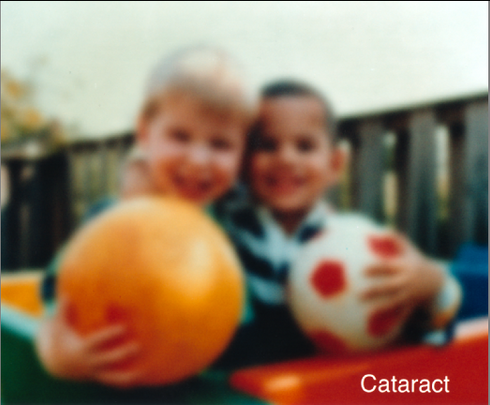Understanding Cataracts
- Andrew Martin

- Sep 26, 2022
- 4 min read
What is a cataract?

A cataract is not a 'skin' which forms over the eye as some people misapprehend; it is a gradual change in the structure of the lens. The lens is situated behind the coloured iris and its function is to help focus the light entering your eye on the retina at the back of the eye. Cataracts develop when the normally transparent lens in the eye becomes cloudy or opaque, and may make the black pupil appear grey or very pale. Cataracts cannot be spread from one eye to the other, but they often occur in both eyes to different degrees.
The condition progresses gradually and painlessly, affecting a small part of the lens, or can develop to affect the whole lens.
It will have an increasing impact on vision and so it is important to start to manage it as soon as possible. If left untreated cataracts can eventually cause blindness.
Symptoms
The first signs of cataract may be noticing your vision becoming slightly blurred or hazy, a bit like looking through a mist or frosted glass. You may start to feel your spectacles need cleaning more frequently. Other indicators may be lights appearing too bright, harsher glare from headlights while driving at night, double vision or reduced contrast in colours. If you suffer from any of these symptoms, you should visit us to have the cause investigated by our optometrist. The symptoms may indicate other eye problems, but regular eye examinations can detect and identify the cause and early treatment can be started to correct your vision and save your sight.
The most common symptoms of cataracts are:
painless blurred or cloudy vision
dazzle or glare in brightly lit rooms or sunlight
halo round lights, such as car headlamps or street lights
poor vision in the dark, which may cause difficulty with driving
double vision in the early stages
colours which seem faded or difficult to differentiate
the need for frequent changes in spectacles or contact lens prescription
It is worth noting that these symptoms can also be signs of other eye problems.
If you have any of them you should come along for an eye examination
What causes age-related cataracts?
Despite extensive research, the cause of cataract formation is still not clear. It is generally thought to be linked to changes in the supply of nutrients to the lens, which are exacerbated with age. Some recognised risk factors which may increase the likelihood of cataract development include poor diet, medical condition such as diabetes and lifestyle choices such as smoking or heavy drinking. Researchers have also found that exposure to strong sunlight speeds up the progression of cataracts, so wearing sunglasses is especially important to stop harmful ultra-violet radiation reaching your eyes. Anti-glare sunglasses are recommended.
Cataract formation is largely age-related
About two thirds of people over 50 have some degree of cataract which may gradually worsen over the years. Cataracts occur more commonly in women than men and are generally thought to be hereditary - so it is important to be aware of your family history. The condition sometimes affects younger people as a result of injuries, diabetes, other longstanding eye problems or certain medications such as steroids or radiotherapy. More rarely a cataract can be present from birth and will be removed at a very early stage to allow the baby's vision to develop normally.
Available treatment
In the early stages, you may be unaware of having cataracts if the cloudiness does not significantly affect your vision. However our optometrist can easily detect the condition during routine eye examination, so regular checks are important. We can sort out any visual problems with spectacles or contact lenses in the initial phase. We can also give advice on visual aids such as magnifiers and the use of appropriate lighting.
If deterioration in your eyesight starts to affect your daily life in simple tasks such as reading, cooking, watching television or driving, then further treatment is needed.
The most efficient treatment is an operation to remove the cloudy lens and replace it with a new clear artificial one known as an intraocular lens, or IOL. Once the IOL is in place it is part of your eye and requires no adjustment or extra care.

This common surgery is a quick and relatively pain-free procedure; usually conducted under local anesthetic on a 'day case' outpatient basis. In the UK alone, over 200,000 operations are performed each year with great success. The operation usually takes about half an hour; a temporary protective pad may be provided to guard against accidental knocks or rubbing immediately afterwards, and eye drops should be used for a few days to reduce inflammation and prevent infection.
Many patients notice an immediate improvement in their vision, although complete healing may take several weeks. Revised spectacles are often needed particularly for reading, after the eye has settled for a few weeks. The surgeon will advise how long to wait before asking your optometrist to prescribe new lenses.
Help yourself prevent cataracts

Some simple changes in your lifestyle can help to reduce your risk of developing cataracts or to slow down their progression. Wear sunglasses to block our harmful UVA and UVB rays. Smoking produces free radicals which can harm your eyes and damage the absorption of vitamins and minerals in your diet. Stopping smoking and eating a healthy, balanced diet are sensible not only for your eyes but for your general well being.
Author: Andrew Martin










Comments